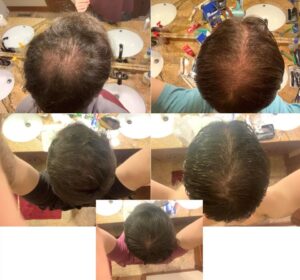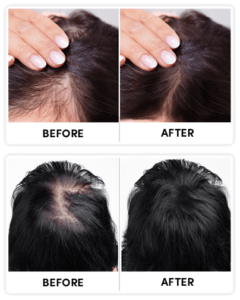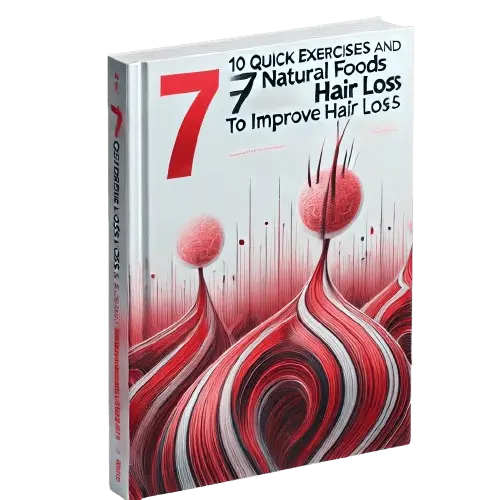Transform Your Hair Journey: Hacking Hair Loss and the Ultimate Follicle Stimulation Guide

Introduction: Getting to Grips with Hair Loss
Hair loss can be quite a challenge, impacting countless people around the globe. While many see it as just a cosmetic issue, the emotional and psychological toll can be pretty heavy. It's important to understand that hair loss isn't a one-size-fits-all problem—there are various causes behind it. By getting familiar with these causes, you're taking the first step toward tackling the issue head-on. In this guide, we'll unravel the complexities of hair loss, bust some common myths, and share effective ways to get those hair follicles buzzing again.
Why Does Hair Loss Happen?
There are countless reasons why hair might start thinning out, from genetics to lifestyle choices. Hormonal changes, stress, not eating right, and certain medical conditions are often to blame. Many folks deal with hereditary hair loss, known as androgenetic alopecia. Pinning down the root cause is crucial to finding a solution that works. Once you know what's causing the hair loss, you can tailor your approach to encourage regrowth.
Busting Hair Loss Myths
There's no shortage of myths when it comes to hair loss. One popular misconception is that washing your hair too often or wearing hats can make your hair thin out. The reality is, these habits have little to no impact. Another myth is that only older folks lose their hair, but the truth is, it can happen to anyone, anytime. Getting rid of these myths is key to taking a realistic approach to hair care and treatment.
How Hair Loss Affects Self-Esteem
Losing hair can hit hard on self-esteem and confidence. Many people start feeling less attractive or youthful, which can lead to social withdrawal or anxiety. Tackling hair loss isn't just about looks; it's about boosting your overall well-being. With the right strategies, you can regain your confidence and learn to love your appearance again.
Hacking Hair Loss: Lifestyle Tweaks
Food and Nutrition for Healthy Hair
Your diet plays a huge role in how healthy your hair is. Eating foods packed with vitamins, minerals, and proteins can really help your hair grow. Try adding lean proteins, leafy greens, nuts, and seeds to your meals. Omega-3 fatty acids, which you can find in fish like salmon, work wonders. A balanced diet will give your hair the nutrients it needs to flourish.
Stress-Busting Tips
Stress is a notorious trigger for hair loss. Activities like yoga, meditation, or even just taking deep breaths can help keep stress levels in check. Spending time on hobbies or activities you enjoy can also be a big stress-buster. Remember, managing stress effectively can really turn things around on your hair care journey.
Why The Ancient Samurai Warriors Never Lost Their Hair…

guaranteed to work for any men or women out there...
Learn moreThe Role of Sleep in Hair Growth
Getting a good night's sleep is vital for your overall health, and that includes your hair. During sleep, your body goes into repair mode, including fixing up those hair follicles. Aim for 7-9 hours of quality sleep each night. Sticking to a regular sleep schedule can boost hair health and give you a more vibrant appearance.
The Science of Follicle Stimulation
Breaking Down the Hair Growth Cycle
Understanding the hair growth cycle is key to knowing how follicle stimulation works. The cycle has three stages: anagen (growth), catagen (transition), and telogen (rest). Boosting those follicles during the anagen phase can really amp up hair growth. Knowing these stages helps you tailor your treatment strategies effectively.
Follicle Stimulation Explained
Follicle stimulation is all about improving blood flow to the scalp and giving hair follicles the nutrients they need. This often involves using topical treatments or scalp massages to get things moving. By enhancing circulation, follicle stimulation can lead to healthier, stronger hair growth.
Ingredients that Boost Follicle Stimulation
Some ingredients are famous for their ability to stimulate follicles. Biotin, caffeine, and minoxidil are among the top contenders. Biotin aids in keratin production, while caffeine improves blood flow. Minoxidil, found in many over-the-counter treatments, extends the anagen phase. These ingredients set a solid foundation for any hair regrowth plan.
Products and Treatments for Hair Loss
Over-the-Counter Solutions
When it comes to over-the-counter treatments, there's no shortage of options for hair loss. Minoxidil is one of the big players, available in various forms. These treatments are easy to use and often deliver noticeable results over time. Consistent use is your best bet for seeing the best outcomes.
Prescription Options
In more severe cases, prescription medications like finasteride might be on the table. These work by blocking hormones that cause hair loss. Be sure to talk about potential side effects with your healthcare provider to make sure they fit your health goals.
Watch Your Hair Come Back FASTER Than You EVER Dreamed Possible

WITHOUT Expensive Medications, Lasers, or Painful Surgeries!
Learn moreHair Growth Gadgets
Thanks to tech advancements, there are now all sorts of hair growth gadgets like laser combs and helmets. These use low-level laser therapy (LLLT) to revitalize hair follicles and encourage growth. While results can vary, many find these devices a valuable part of their hair care routine.
Natural Remedies and At-Home Solutions
Essential Oils to Boost Hair Growth
Essential oils like rosemary, lavender, and peppermint are well-loved for their hair growth benefits. You can massage them into your scalp or mix them into your shampoos and conditioners. Plus, they leave your hair smelling fantastic.
DIY Hair Masks and Treatments
Whipping up DIY hair masks with ingredients like avocado, honey, and egg can give your hair the nourishment it craves. These natural treatments offer moisture and essential nutrients, helping to keep your hair healthy. And they're a fun, easy project you can do at home!
Boosting Growth with Scalp Massages
Regular scalp massages can do wonders for blood flow to the hair follicles, promoting growth. Use your fingertips or a scalp massager and gently work in circular motions. This simple practice is both relaxing and effective, making it a great addition to your routine.
Professional Treatments and Surgeries
Considering Hair Transplants
If you're looking for a more permanent fix, hair transplants can be incredibly effective. These surgeries involve moving hair follicles from donor areas to spots that are thinning or balding. It's a big decision that requires careful thought and consultation with a specialist, but the results can be transformative.
Exploring Laser Therapy
Laser therapy offers a non-invasive way to stimulate hair follicles using low-level lasers. You can get this treatment done in a clinic or at home with approved devices. It's a safe and effective option for many, helping to achieve thicker, fuller hair over time.
Top Trichologist: Do This To Your Scalp To Regrow A Full Head Of Hair

Completely natural and dirt cheap way that makes it possible for you to finally regrow all your hair back.
Try this at homeDiving into Platelet-Rich Plasma (PRP) Therapy
PRP therapy involves injecting platelet-rich plasma from your own blood into the scalp. This boosts natural hair growth by increasing blood supply to the follicles. It might require several sessions, but many find PRP therapy to be a promising option for hair restoration.
Preventing Hair Loss: Long-Term Plans
Sticking to a Scalp Care Routine
A regular scalp care routine is crucial for keeping hair loss at bay. This means washing, exfoliating, and conditioning regularly. A clean, healthy scalp lays the groundwork for hair growth, cutting down the risk of hair loss over time.
Picking the Right Hair Products
Choosing the right hair products can make all the difference. Go for sulfate-free shampoos and conditioners that nourish instead of stripping your hair of natural oils. Products designed for your specific hair type will give you the best results.
Rocking Protective Hairstyles
Protective hairstyles can help minimize hair damage. Styles like braids, buns, or twists ease tension on the hairline and scalp. Plus, avoiding excessive heat or chemical treatments can keep your hair in tip-top shape and prevent breakage.
Conclusion: Your Ultimate Hair Care Journey
Setting Realistic Goals
Starting a hair care journey requires patience and realistic goals. Results can vary, so it's important to remember that hair growth takes time. Celebrating small wins along the way can keep your spirits up and your focus sharp.
Consistency is Key
When it comes to hair care, sticking to your routine is crucial. Whether it's treatments, lifestyle tweaks, or professional therapies, regularity is essential to reaching your hair goals.
Embrace Your Hair Journey
At the end of the day, your hair journey is yours and yours alone. Embrace it with confidence and self-love. Try out different approaches, and remember that your worth isn't tied to your hair. By taking proactive steps and caring for your locks, you can turn your hair journey into a positive and empowering experience.






